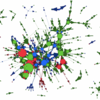Ronak B. Patel and Leah Nosal. 1/2017. Defining the Resilient City. United Nations University Centre for Policy Research. Read PublicationAbstract
This background note is part of the United Nations University project on Resilience and the Fragile City and is meant to complement the paper ‘Conceptualizing City Fragility and Resilience’ (de Boer, Muggah, Patel 2016) which formally presents the fragile and resilient cities assessment framework. As resilience has become a more prominent and pervasive concept, this paper explores its application for urban environments in contexts of fragility (i.e. urban zones characterized by complex crises that often involve high levels of violence, extreme poverty, and disaster simultaneously) (see de Boer 2015). The paper reviews dozens of resilience frameworks and highlights a number of important findings: 1) the majority of existing resilience frameworks are useful for assessing resilience to natural disasters, yet few are effective in understanding resilience in contexts of fragility; and (2) many existing frameworks have yet to be empirically tested and largely rest on a Theory of Change. This means that very few indicators have been independently derived based on empirical data of what works. To fill these gaps, the paper concludes by proposing an approach to assessing resilience in contexts of urban fragility, which is then fully developed in the framework paper mentioned above.

